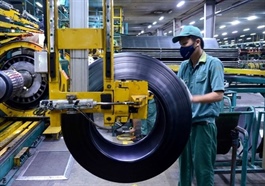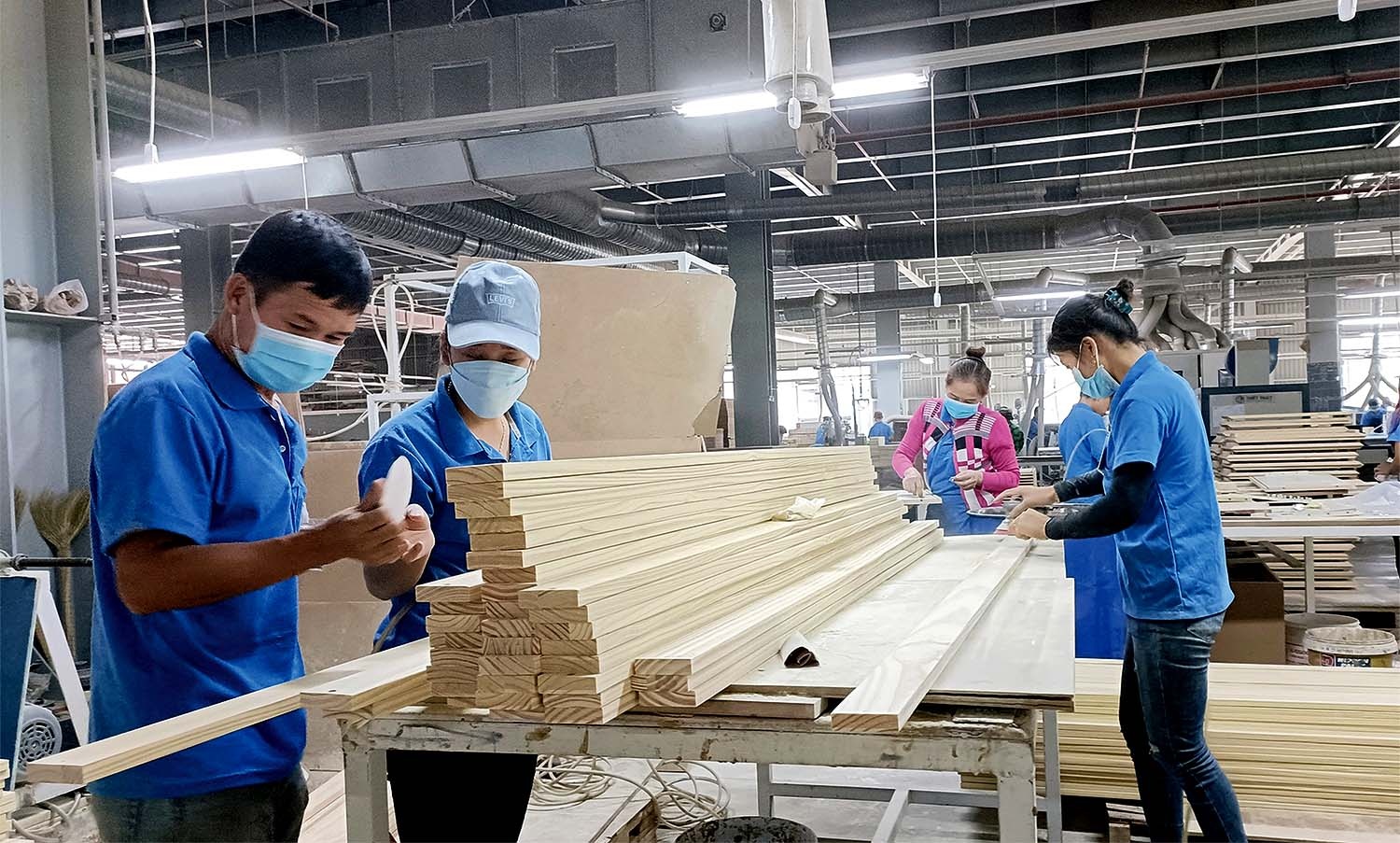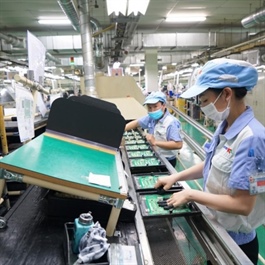Production amplification an answer for export goals
Production amplification an answer for export goals
Despite a rise in export revenues for Q1, persistent risks in the global market including trade barriers are challenging Vietnam in hitting its export target this year.

The General Statistics Office (GSO) last week reported that in the first three months of this year, the country’s total export turnover is estimated to hit $93.06 billion, up 17 per cent on-year. Vietnamese exporters earned $25.2 billion, up 26.2 per cent and accounting for 27.1 per cent of the economy’s total export value; and foreign exporters fetched $67.85 billion (including crude oil exports), up 13.9 per cent and responsible for 72.9 per cent.
However, the government has warned that though there have been good signals for Vietnam’s export landscape, global geopolitical uncertainties may continue undermining the country’s efforts to boost production and exports in 2024 and beyond.
“It is forecasted that the global economic growth will be undermined by a series of unfavourable factors, with an increase in risks, in addition to strategic and geopolitical competition among major countries becoming increasingly complicated and unpredictable, while there is a danger of global supply chain disrupted again,” said Prime Minister Pham Minh Chinh. “This will affect domestic production and exports.”
The on-year export turnover in 2023 is estimated to sit at $355.5 billion, down 4.4 per cent on-year. The government has set a goal that in 2024, the total export turnover will be $380 billion and total import turnover will be $365 billion. Total trade surplus will be $15 billion, according to the Ministry of Industry and Trade (MoIT).
With a view to materialising this goal, it is clear that bigger efforts must be made in amplifying production and expanding exports, but the task is not so easy given difficulties escalating in the global economic landscape.
In fact, declines in demand in Vietnam’s key markets reduced significantly last year, including the US (11.6 per cent), South Korea (3.4 per cent), ASEAN (4.1 per cent), the EU (5.9 per cent), and Japan (3.2 per cent). However, in Q1 2024, these rates climbed 26, 12.9, 9.5, 16.3, and 6.4per cent, respectively.
The government has required the MoIT in combination with relevant agencies and localities nationwide to urgently work with business associations and enterprises to soon remove difficulties for production and business, especially regarding key export items such as garments and textiles, machinery, electronics, and steel.
“There is an imperative need to continue diversifying export markets and products, as well as supply chains; and to strengthen and expand Vietnamese products’ market share,” the government stated in a resolution released last week.
“There must be synchronous and adaptive solutions and plans to respond to new regulations of importing markets, especially regulations about emission reduction, anti-deforestation, green growth, product origin tracing, and food safety.”
At present, there has been a rising trend in protection barriers in many foreign markets. For instance, as of November 2023, Vietnam’s exports faced 238 trade remedies probes from 24 markets. Among them, the leading cases are anti-dumping investigations (132 cases), followed by trade remedies (48 cases), anti-circumvention of trade remedies (35 cases) and anti-subsidy (23 cases).
In a specific case, in mid-March, the Trade Remedies Authority of Vietnam received notice from the World Trade Organization about the United States International Trade Commission initiating a global safeguard investigation with artificial staple fibre products from polyester.
The plaintiffs are US manufacturers of man-made polyester staple fibres, including Fiber Industries LLC, Nan Ya Plastics Corporation, and Sun Fiber LLC. The plaintiff alleges that the import of artificial staple fibres from polyester has increased sharply compared to domestic production and consumption, causing serious damage and affecting the domestic production industry.
“In addition to a large number of foreign anti-dumping investigations on Vietnamese export goods, some major export markets, including the US, have also increased probes on anti-circumvention of trade remedies,” said MoIT Deputy Minister Phan Thi Thang. “Among the investigation cases of evasion of trade remedies measures on Vietnamese export goods, there are a number of cases related to items with large export turnover, such as solar batteries and wooden cabinets.”
What is more, Vietnam’s domestic industrial production sectors are currently mainly export-oriented, highly contingent on the global market because domestic supply far exceeds the demand of the local market, especially for industries such as textile and garment, footwear, and electronics. Only 10 per cent of products produced in Vietnam are consumed domestically, and the remaining 90 per cent are for export.
Under a Q4 of 2023 survey conducted by the GSO involving 6,500 manufacturing and processing enterprises throughout the country, the surveyed firms stated that they are facing massive difficulties both at home and in export markets.
When it comes to industrial output, only 32.7 per cent of respondents said there had been a rise in such output in Q4 as compared to Q3. In Q1 2024, only 30.5 per cent of respondents reported an expected increase in production from Q4 2023.
As for orders, only 29.2 per cent of enterprises had orders bigger in Q4 2023 than in Q3 of the same year. In comparison, between Q1 2024 and Q3 last year, only 29.3 per cent of respondents expected a climb in orders.


























